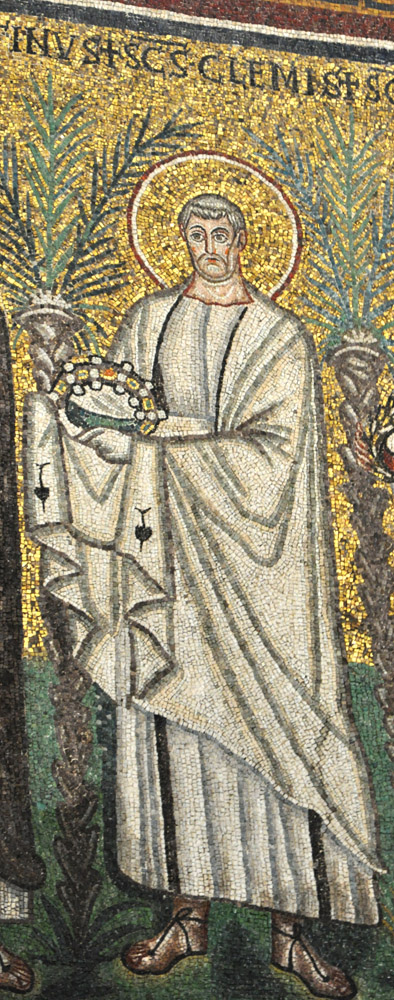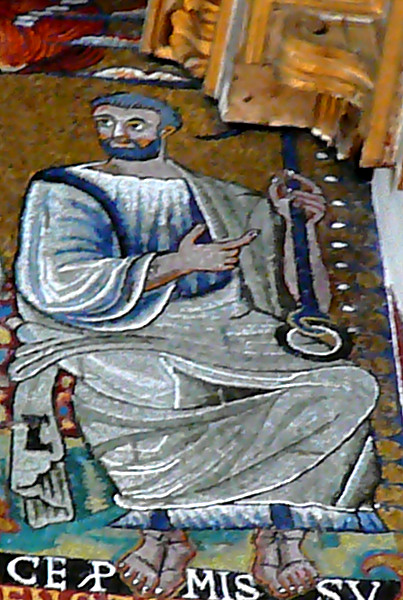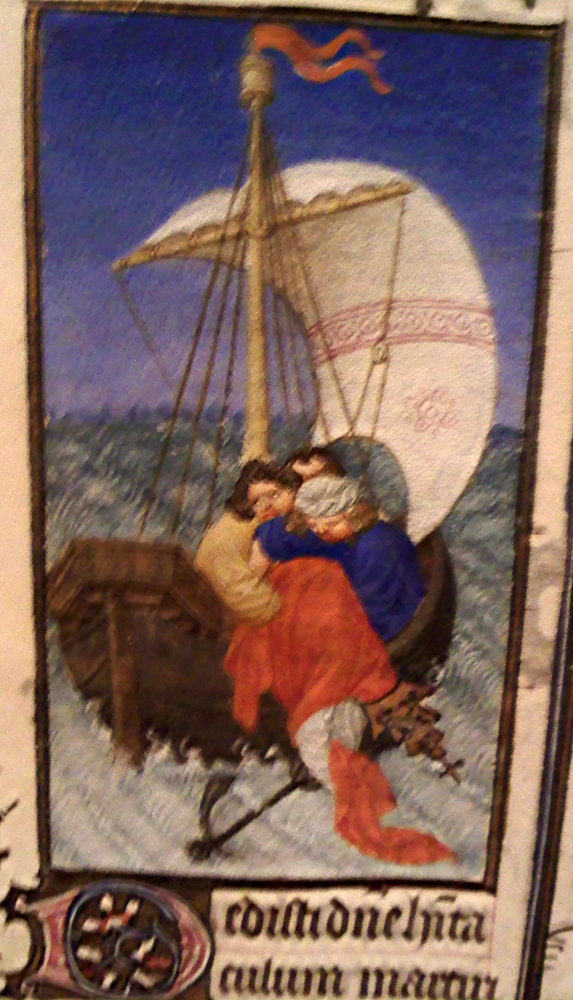In the second part of the account, Pope Clement converts the wife of the courtier Sissinius, who is struck blind when he tries to spy on the Mass. After Clement cures the blindness Sisinnius nevertheless orders the pope bound with ropes, but the ropes are tied around a stone column instead (image).
The emperor Trajan then has Clement exiled to a marble quarry in the Crimea, where he converts thousands after a water miracle similar to those of Moses and St. Peter (image). A general sent by the emperor then orders him drowned with an anchor fastened to his neck, hoping to forestall any post-mortem cult of the saint.
The Legend simply says he is thrown into the sea. Most images have him like Jonah, thrown over the side of a ship – on the open sea, as at right, or within sight of the shore as in this example. One image has the principals standing "at the water's edge" while the general orders the anchor secured to Clement's neck and a mariner reaches to pull the man and the anchor into his boat.
Trajan's intentions notwithstanding, Clement's resting place does become a site for cult. Angels immediately build an underwater temple in which they place his body and the anchor. Once a year the sea recedes three miles so people can come and pray in the temple, a phenomenon that continues for many years. The Legend tells of one miracle at the temple: a boy left behind when the sea swept back over the temple was still alive when it receded again the following year; he thought he had been asleep for a single night (image).
In the 9th century what he believed to be the bones of the saint were transfered from the Crimea to the Basilica of St. Clement, in Rome (image).2
Prepared in 2015 by Richard Stracke, Emeritus Professor of English, Augusta University, revised 2015-10-20.

In this 6th-century mosaic in Ravenna Clement leads the martyrs in the procession bringing their crowns to the throne of Christ. His crown is his only attribute. (See the description page)

Detail of the apse mosaic at San Clemente, Rome: St. Clement holds the anchor that is his attribute. (See the description page.)

The anchor that is Clement's attribute is seen in this manuscript illustration of his drowning at sea. (See the description page)
ATTRIBUTES
- Anchor
- Papal tiara
MORE IMAGES
- First half of the 12th century: "St. Leonard's Cupola," at the south end of the crossing in St. Mark's, Venice, has mosaic portraits of St. Clement, St. Leonard, St. Nicholas, and one other.
- 1688: With Christ and Peter in a dome fresco in Seville.
DATES
- Feast day: November 23
- Died circa 100
BIOGRAPHY
- Golden Legend #170: html or pdf.
- Early South English Legendary, 322-40.
- The Roman Breviary: English translation, IV, 763-64; Latin original, 1109-1112.
- Butler, IV, 405-408.
- Metaphrastes' Greek Life of Clement with Latin translation: MPG, CXVI, 179-90.
ALSO SEE
NOTES
1 Among historians the Itinerarium is commonly called The Recognitions of Clement. It was condemned as apocryphal by the Decretals of Pope Gelasius in 496.
2 Roman Breviary, IV, 764.